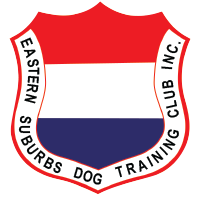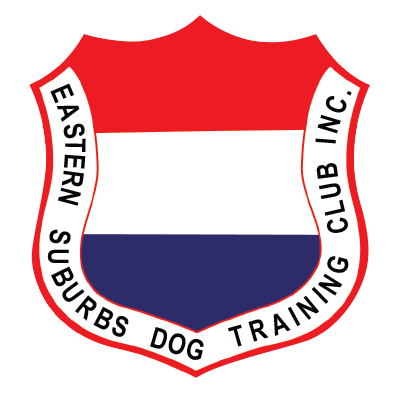RESPONSIBLE DOG OWNERSHIP COURSE
Responsibe Dog Ownership Course
The Responsible Dog Ownership (RDO) Course includes the latest training material and techniques from organisations such as Dogs NSW and incorporates rules, regulations and responsibilities of dog ownership outlined in information from the State Government, local councils, RSPCA and Centennial Parklands.
The RDO Course uses positive, reward-based training techniques to shape the desired behaviour in a dog and strengthen the bond between the dog and its owner. The course also features discussions on dog care and maintenance and covers important topics such as dog body language and car safety.
A week by week summary of the key points, training exercises and discussion topics covered during the course is provided below.
Recorded attendance for each week of the RDO Course earns the owner and dog a Certificate of Attendance and automatic progression to either Foundation Class or Class 1, where both can build upon the exercises covered in the RDO Course.
The Club also runs further training for which promotion tests must be passed for progression.
NEXT TRAINING DATES
Please note
Dogs must be fully vaccinated before enrolling in classes. A current vaccination certificate must be provided when joining the Club.
Responsible Dog Ownership Course Resources

The following resources complement the Discussion Points covered in the Club’s 6 Week Responsible Dog Ownership (RDO) Course.
It consists of quotes from and links to various sources, such as the Dogs NSW Obedience Instructors Manual (4th Edition 2012), upon which the RDO Course is based, NSW Government website pages, and 3rd party websites.
All attempts have been made in good faith to credit quoted sources. Please contact the Club if you have any concerns about published material.
Key points: Getting Dog’s Attention; Loose Lead Walking; Sits & What is Reward Based Training?
The following is an overview of the training exercises and discussion topics covered during Week 1:
Introduction:
- How to settle your dog
- Check dog’s training equipment and record attendance
- Welcome and introduction
- ESDTC Responsible Dog Ownership program and objectives
- What is “Responsible Dog Ownership”?
- Attendance requirements to gain Achievement Certificate
- Training method is used – positive, motivational reward based training
- Instructors give time freely and their only reward is to see your dog improve
- Reminder, Instructors can give you advice on how to train your dog but the main task is yours
- Time and effort you put into training over next 6 weeks will show in the way your dog improves.
New exercises:
- Name Recognition and Watch Me: Use name (voice tone) and lure, to gain attention – don’t tug on lead
- Sit: Use food lure, right hand signal and voice command. Working towards automatic sits whenever owner stops.
Discussion – How dogs learn:
- Dogs learn by repetition of pleasant experience
- Dogs learn best by positive reinforcement
- Behaviour which is not reinforced or rewarded gradually disappears.
Discussion – Reward based training:
- Use food as a motivator and reinforcer with praise
- What foods to use, the higher the value the more willing your dog will work
- Use food as a lure to gain and teach behaviours
- The appropriate way to use food in training and management of your dog’s food intake to avoid over feeding. Do not feed your dog prior to training
- Use a treat pouch when training with food
- Goal is to fade treat out to visual and/or verbal cue and replace with praise.
New exercises:
- Loose Lead Walking: Use lure, left hand signal and voice command. Working towards close Heeling, with dog beside your left leg. If dog pulls, stop and wait for tension in lead to slacken and/or use food to lure dog back to your side before setting off again.
- Right About Turn: Use dog’s name to gain attention and food to lure as you turn right about and bring dog (clockwise) around you.
- Sit on halts: Lure into position, use hand signal and voice command
Discussion – Club & Centennial Park Rules and facilities
Summarise and homework:
- Members to settle dogs beside them
- Recap the use of food as lure & reinforcer
- Recap all exercises and how much to practice at home – 10 minutes a day
- Remember, be patient and don’t get frustrated. If frustrated, ask for a behaviour the dog knows and end training session on a positive note. Try new exercise later on that day or the next
- Remember: Training should be fun for you and the dog! Introduce play time before, during and after training. Dogs love play!
New exercise:
- Take Dog Over Inspection Table: Lure dog onto table and straight off – do not force, halt or sit. Okay if your dog does not want go over – just let Club Helper know next week
- Reminder: Inspection Line opens from 8:30 and training begins at 9am next Sunday!
Resources:
- Responsible Dog Ownership Course Resources: Quotes from & links to various sources to complement Discussion Points covered in class.
Key points: Loose leash Turns; Recall; Stand; Dog body language & good manners
The following is an overview of the training exercises and discussion topics covered during Week 2:
Revision of Week 1 exercises
New exercises:
- Dogs to Sit for greeting: Use of food to reward good behaviour and “negative punishment” if dog jumps up
- Left About Turn: Use dog’s name and food lure to get dog level with your left leg, place right leg in front of dog and use lure to complete turn with left leg, dog swinging its backside (anti-clockwise) around to follow you
- Informal Recall: Loose lead walking, stop, use dog’s name to gain attention, then lure dog with food and command “Come” – run backwards short distance if necessary and repeat lure and command. Dog only has to return to owner, it does not have to sit in front of owner (working towards Week 5 Formal Recall)
- Remember: never reprimand a dog when it has come to you (even if you’ve had to fetch it!).
Discussion – Body language & good manners:
- Discussion on dog body language – warning signs
- Appropriate social behaviours for dog to dog greeting
- How to approach another dog and handler on the footpath – handler to handler
- You have a right to move to another spot in class or ask another handler to restrain their dog if it’s making your dog feel anxious
New exercises:
- Stand: Use food lure, left hand signal & voice command
- Dog to Stand on Inspection Table: lure, do not force, okay if dog does not want to walk onto table and/or stand (come back and try when quiet later).
Resources:
- Responsible Dog Ownership Course Resources: Quotes from & links to various sources to complement Discussion Points covered in class.


